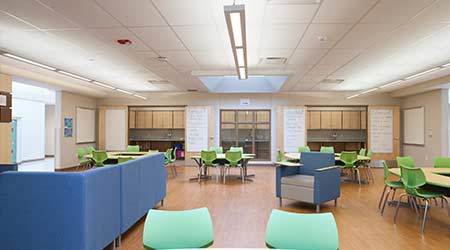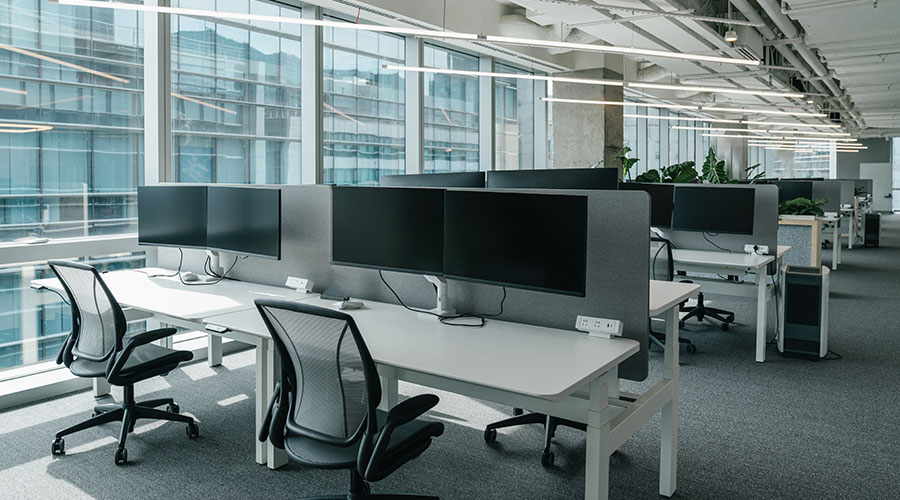 Acuity Brands
Acuity BrandsLighting Needs for Education Facilities
Part two of a three-part article on LEDs
Education facilities are increasingly using LED technology in a number of different applications. Among the areas influenced by the technology are safety, security, and emergency lighting, as well as creating a more relaxing atmosphere for staff and students.
Universities and colleges tend to place a high priority on sustainability, and the installation of LEDs can help managers in those facilities achieve green goals.
“Often times, activities that support (sustainability) involve the local student body, faculty and the community,” says Chris Bailey with Hubbell Lighting. “When successfully demonstrated, these ideals can promote lasting change and provide tangible benefits.
“Energy efficiency, maintenance expenditures and the environmental implications of doing more of the same is no longer the realm of statisticians, accountants and scientists. These are everyone’s issues now, and few organizations are pulled harder towards a greater level of financial and environmental sustainability than higher education institutions.”
LEDs also have had an impact on lighting for walkways and parking ramps in institutional and commercial facilities. And with increased emphasis on the security of students in K-12 schools, as well as universities and colleges, the need for maintenance-free lighting to keep outdoor areas and hallways properly lit is essential.
“Safety and security are big issues on campuses across the country,” says Chris Baird with HyLite LED Lighting. “LED lighting can easily adapt with the use of controls to provide bright, safe light in areas while maximizing energy savings. The ability for LED lighting to act as a high-output light source that strikes instantly makes this possible.
“Traditionally, in areas where HID lamps have been used, dimming controls and occupancy sensors were not suitable because of long strike time. With LED, schools and universities can dim or turn off fixtures in areas when no one is around, like parking garages, stairways and hallways. These fixtures can instantly be brought up to full brightness when someone enters the area.”
LEDs also can play a central role in helping students be more productive.
“LEDs have higher color-rendering indexes (CRI) than traditional fluorescent and incandescent lights,” Sonderen says. “CRI is how accurately a light source shows the true colors of people and objects when compared to natural daylight.
“The higher a light’s CRI, the more it mimics natural light. A high-CRI LED light can serve to match a student’s natural circadian rhythm or to move it forward. A classroom with illumination that mimics sunlight will help students and instructors feel more awake and, in turn, be more productive.”
Education facilities also can take advantage of LEDs in emergency-lighting applications.
“Certainly, any one of the market segments should be concerned (about emergency lighting), but in schools, it may be a little more paramount,” Youngquist says. “A lot of fixtures are built with an emergency ballast that has 90 minutes of battery power back-up capability to operate the fixture at a lower level.”
Related Topics:














